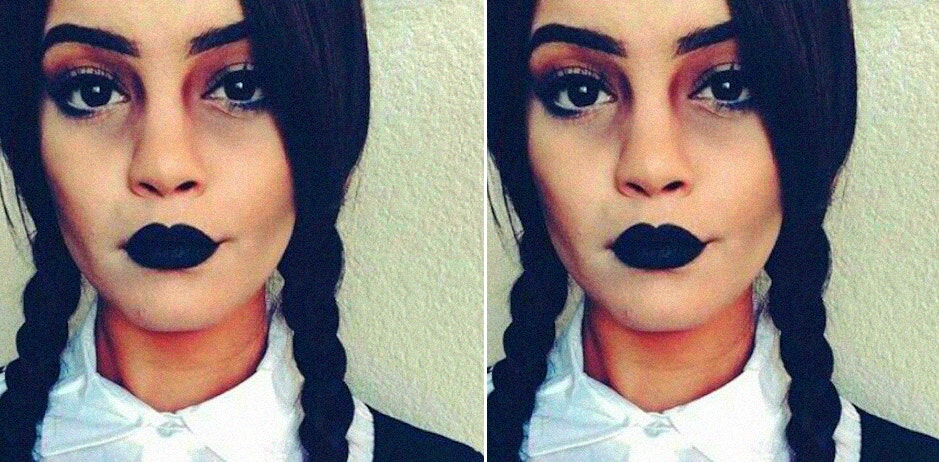Mental Illness Is Not A Halloween Costume
Mental illness can be scary, but people struggling with it shouldn't be.
 weheartit
weheartit "Local tales and superstitions thrive best in these sheltered, long settled retreats; but are trampled under foot, by the shifting throng that forms the population of most of our country places." —The Legend of Sleepy Hollow by Washington Irving
Working on an inpatient ward that focuses on the treatment of schizophrenia and other psychotic disorders for the past decade, I routinely tell each cycle of medical students who start working with me that one of my main goals for them, if not the main goal, is that they come away feeling less scared of people with serious mental illness.
I acknowledge that, unless we have some personal experience with mental illness, most of us are scared when we first meet patients in a psychiatric hospital. And finally, I tell them, the reason that we’re scared is that we watch too much television.
Mental illness stigma is all around us, especially on television and in movies where people with psychosis are routinely portrayed as serial killers or worse.
Consider one of the most iconic comic-book villains of all time: the Joker. The late Heath Ledger garnered widespread praise, and won both a Golden Globe and an Oscar for his portrayal in 2008’s The Dark Knight of a character he described as “a psychopathic, mass-murdering, schizophrenic clown.” Schizophrenic? Now that's a joke. (And while we’re at it, psychiatrists aren’t treated much better on screen. Hannibal Lecter? Really?)
As if the media portrayal of those with mental illness isn’t bad enough, mental illness has been exploited as a Halloween attraction through the years. Recently, national attention was focused an amusement-park attraction called “Fear VR: 5150” at Knott’s Berry Farm that centered around the “insane asylum cum horror show” trope.
Los Angeles Times columnist Steve Lopez recently described how Ron Thomas — the father of Kelly Thomas, a 37-year-old man with mental illness who was killed by police in 2011 — visited the attraction and left saddened, politely calling it “inappropriate” and “so insensitive.” In response to the public outcry, Knott’s Berry Farm closed the attraction and Six Flags New England shut down its “Psycho-Path Haunted Asylum” as well.
But shuttering a few amusement-park attraction only gets us so far, because the Halloween fetishization of mental illness isn’t just something exploited by corporate America — it’s something we all risk playing a part in because of how entrenched the belief is that mental illness, like some zombie virus, is likely to turn ordinary folks into murderous monsters.
Not convinced? Look no further than Amazon.com to see the ubiquity of Halloween costumes playing on stereotypes of mental illness. It seems likely that at least some of us will suit up our children in straitjackets this season, or, if not, answer the door for other children so attired.
The case for breaking the stereotype of mental illness as a Halloween staple has already been made eloquently in recent weeks:
- Huffington Post editor Lindsay Holmes said it in her article “Mental Illness is a Health Condition, Not Halloween Entertainment.”
- Writer Colby Iktowitz spoke up in the Washington Post feature, “Halloween attractions use mental illness to scare us. Here’s why advocates say it must stop.”
- And the author, psychology professor, and self-described psychiatry patient Andrew Solomon penned a New York Times op-ed called “Mental Illness is Not a Horror Show."
What do I have to add? Support, for one thing: Read the articles. Share them. Tweet and retweet them. Then spread the word: Mental illness is not funny. Mental illness is not an amusement park ride. Mental illness is not a horror movie. Mental illness is not a Halloween costume. Don’t dress your child up in a straitjacket and don’t wear one yourself.
Elsewhere, I’ve argued that the stigma surrounding mental illness doesn’t come from words like “schizophrenia” so much as how the general public — that is, all of us — thinks about people with psychosis and other forms of mental illness.
Just so, changing the name of schizophrenia or claiming that it’s not a mental illness isn’t going to remove the stigma associated with the term. Instead, removing the stigma of mental illness requires that we all transform our idea of people with mental illness into something other than objects worthy of fear.
Of course, it’s ultimately that very fear — of media-driven stereotypes, of the unknown, of what we might ourselves become — that relegates mental illness to the domain of Halloween fetish along with ghosts, witches, and skeletons.
But portraying mental illness as a cartoonish Halloween costume doesn’t remove that phobia, even if that might be the intent on some level. After all, mental illness isn’t unknowable and it isn’t a death sentence: It’s something people recover from or live with given proper treatment and support.
Make no mistake: Mental illness can indeed be scary for those who experience it. But for those of us lucky to have our mental health intact, we can make it less scary for them by becoming less scared of it ourselves.
How do we do that? We do what my medical students do. They spend time with people who have mental illness. They listen with compassion and try to understand. They talk to them. They try to lend a helping hand. And that, of course, is a prescription for dealing with all undeserving objects of our fear.
Joseph M. Pierre, M.D., is the co-chief of the Schizophrenia Treatment Unit at the VA Greater Los Angeles Healthcare Center and a health sciences clinical professor of Psychiatry at UCLA.
YourTango may earn an affiliate commission if you buy something through links featured in this article.

